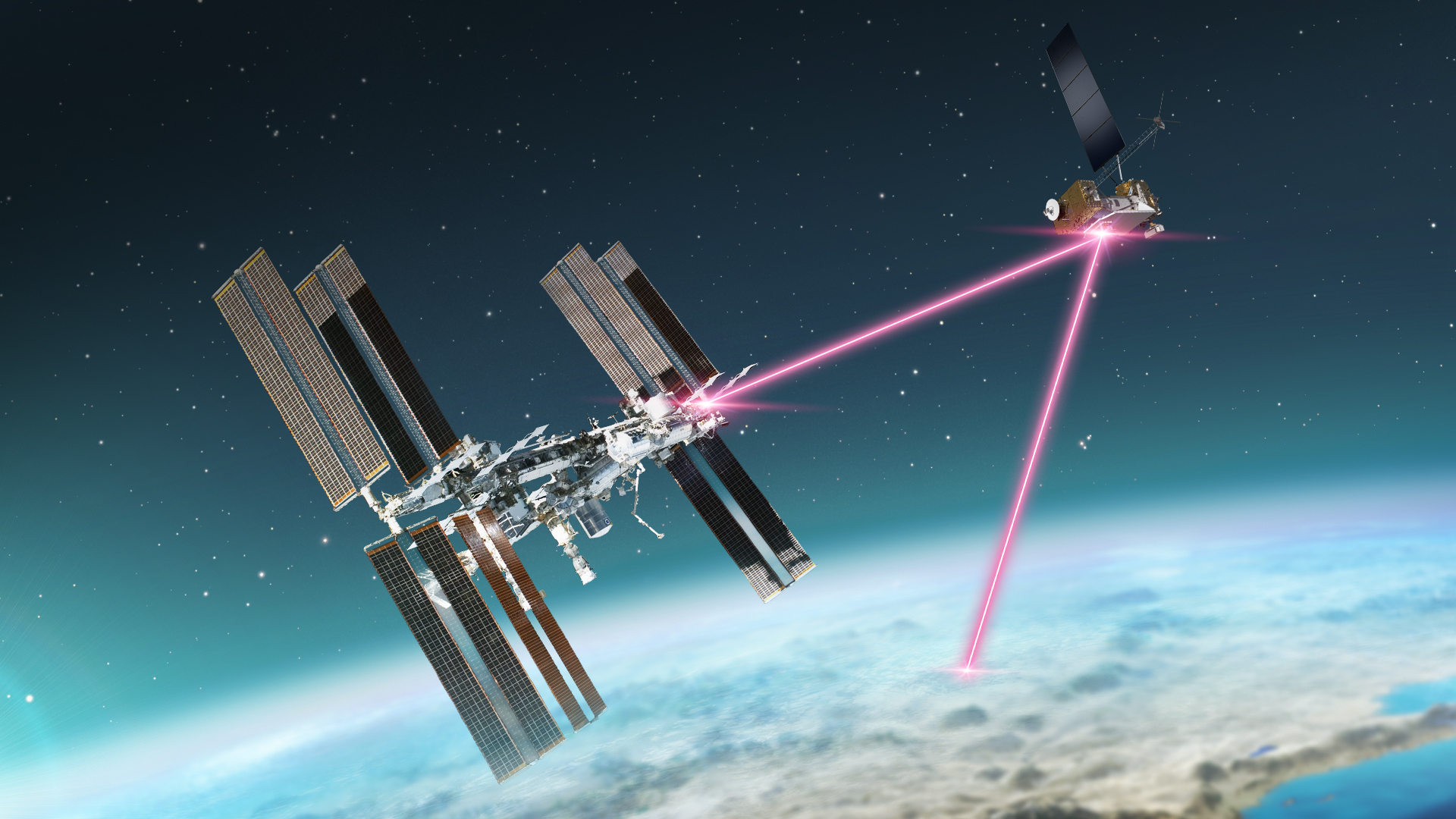
Later this year, SpaceX’s 29th Commercial Resupply Services mission will lift a refrigerator-sized device to the International Space Station.
This device — given the catchy name of Integrated LCRD Low Earth Orbit User Modem and Amplifier Terminal (ILLUMA-T) — will complete NASA’s first two-way, end-to-end laser communications system. Harnessing laser beams, ILLUMA-T will transmit information to another satellite at the rate of a respectable Earth-based internet connection.
Both crewed and uncrewed space missions have nearly always communicated (to Earth, from Earth, to each other) via tried and trusted radio waves. But sending information with lasers has a few advantages over radio. For one, laser equipment is lighter and less power-intensive, making it easier to fit on a craft. Plus, because laser light wavelengths are shorter than radio wavelengths, a laser communications link can transmit orders of magnitude more information at once.
Related: NASA's Psyche asteroid mission will test next-gen laser communications in space
Thus, NASA has tinkered with laser communications for over a decade, shooting light both between the ground and Earth orbit and between Earth and lunar space. Quietly joining NASA’s list was Laser Communications Relay Demonstration (LCRD), fitted aboard a U.S. Department of Defense satellite that launched in December 2021.
Only after ILLUMA-T’s launch will LCRD assume its full purpose. Once ILLUMA-T is in operation aboard the ISS, it will begin beaming information to LCRD via infrared laser at a rate of 1.2 gigabits per second. From there, LCRD will relay the information to two ground stations: One in Hawaii and the other in California. Mission planners chose those locations to avoid cloud cover, which lasers struggle to penetrate.
If this tech demonstration is successful, LCRD will one day serve as a relay for other orbital laser links, too. Far into the future, astronauts may even speak by laser from much, much farther away.







